How to adjust the toilet float and change it if necessary
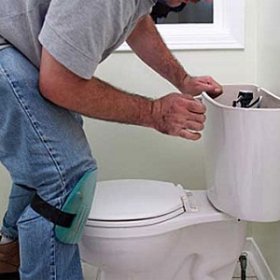
Minor damage can create many problems. Someone will call the plumbing to eliminate them, and the real owner in his house will do everything, or almost everything, himself. And save money, and no one will have to wait. You can adjust the toilet float, fix the faucet, and clean the pipes without any special skills and with a minimum set of improvised tools.
How is the toilet flush cistern arranged?
All models of toilets consist of a bowl fixed to the floor or wall, and a water tank (drain tank) located slightly higher.
Functioning is based on the principle of a water seal. Using a button or lever, we lower the water into the bowl, flushing its contents into the sewer.
Inexpensive, mainly Russian models are equipped with lateral water supply. In imported sanitary ware, the set is carried out from below. For the consumer, almost all the difference boils down to the loud noise that occurs in the first case.
There are two types of water drainage mechanism: rod and push-button. The first is already obsolete and is found only in old apartments and films from the time of the USSR. Modern models have long been produced with a button, and in recent years already with two - this allows you to drain not only the volume of water, but, if necessary, only half of it.
The most common breakdowns of the toilet bowl and how to fix them
Before starting repairs, you need to thoroughly study the device for securing the toilet lid. If you break it or damage the lid itself, you will have to change the drain tank.
Constant filling and draining of the tank are most common. There may be several reasons for this:
- skew of the float;
- shut-off valve lets water into the float;
- hole in the float;
- float membrane wear.
So, in order. How to adjust the float in the toilet? If the lever is made of brass, just bend it. Raising and lowering, you can quickly determine in what position it covers the water.
In modern models, a plastic lever is often found.
If you carefully inspect it, then there will be no problems with the adjustment: the float in the toilet bowl is positioned using a fixing screw that allows you to change the bend of the lever, or through a regular plastic ratchet that fixes it in the right position.
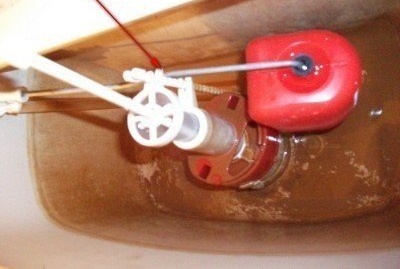
In modern models, a plastic float is installed, it does not lend itself to the harmful effects of hard water
The shut-off valve is replaced in the following sequence:
- We drain all the water from the tank.
- The valve is disconnected from the water pipe.
- The lever is removed.
- Lock nuts are loosened.
- The old valve is removed.
- A new valve is installed, which is secured with old nuts.
- The tank is filled with water.
- The float is set to the desired position.
If the float is damaged, it fills with water, becomes heavier and sinks. There are, of course, two solutions to the problem: replacement or repair.
Before changing the float in the toilet, you need to close the valve filling the tank, and then drain all the water. The water supply pipe is unscrewed with an adjustable wrench, the old float is pulled. A new part is installed in its place, the water supply is restored. desired water level in the tank is regulated by a float, this position is fixed.
In the second case, the hole is sealed with heated plastic or a plastic bag is put on the float. Before proceeding with these operations, the float is freed from water.
To replace a worn membrane, the float lever is attached to the crossbar and all the water drains from the barrel. The nut that holds the flush pipe is unscrewed.
Then the siphon should be disconnected, having previously loosened the fastening nut. The new membrane is replaced by the old one. To assemble the drain tank mechanism, the above steps are performed in reverse order.
How to choose a float valve?
If the float valve is not selected correctly, then it is useless to repair it: after a few days, water from the barrel will again begin to leak. What to be guided by when choosing a mechanism? You need to know the pressure indicators in the water supply. Depending on them, this part is selected. Four types of float valves are distinguished:
- for a weak pressure of water;
- for medium water pressure;
- for a strong pressure of water;
- stabilizing valve.
The latter experts recommend the owners of those houses and apartments that are located in areas with variable pressure in the water supply.
In order not to often have to repair mechanisms or even change them, preventive measures must be taken. It is enough to carry out an inspection several times a year for damage. So you will save not only yourself, but also your neighbors from unplanned expenses and repairs.
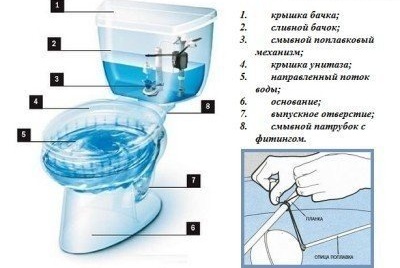
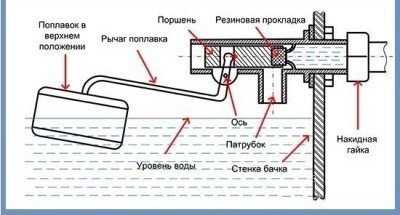

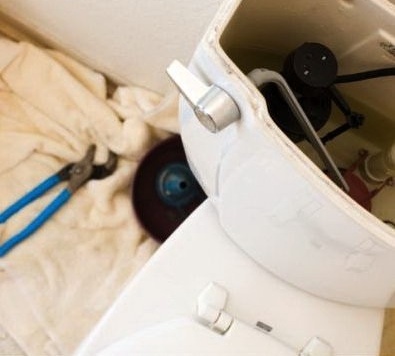
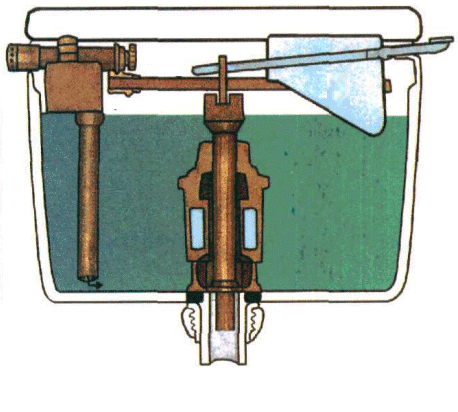
1 comment